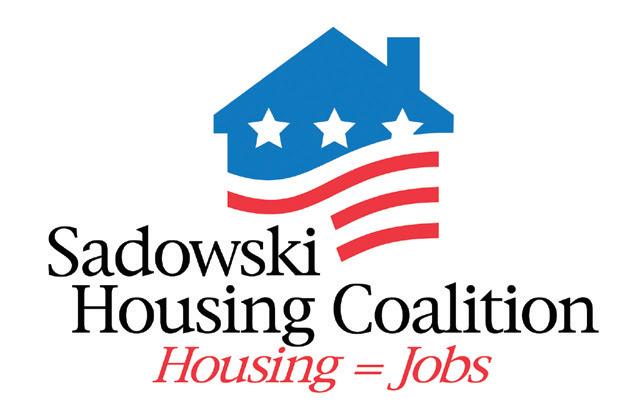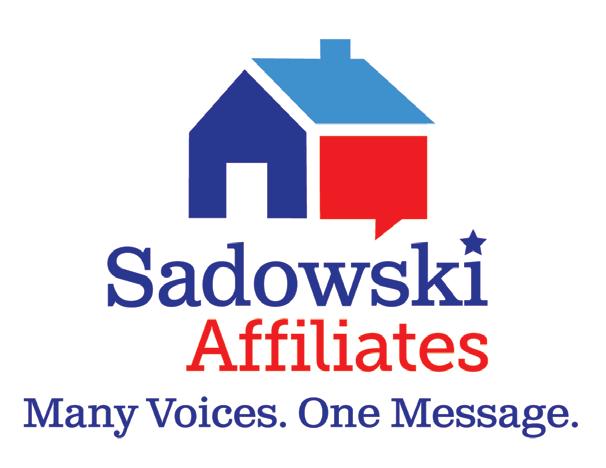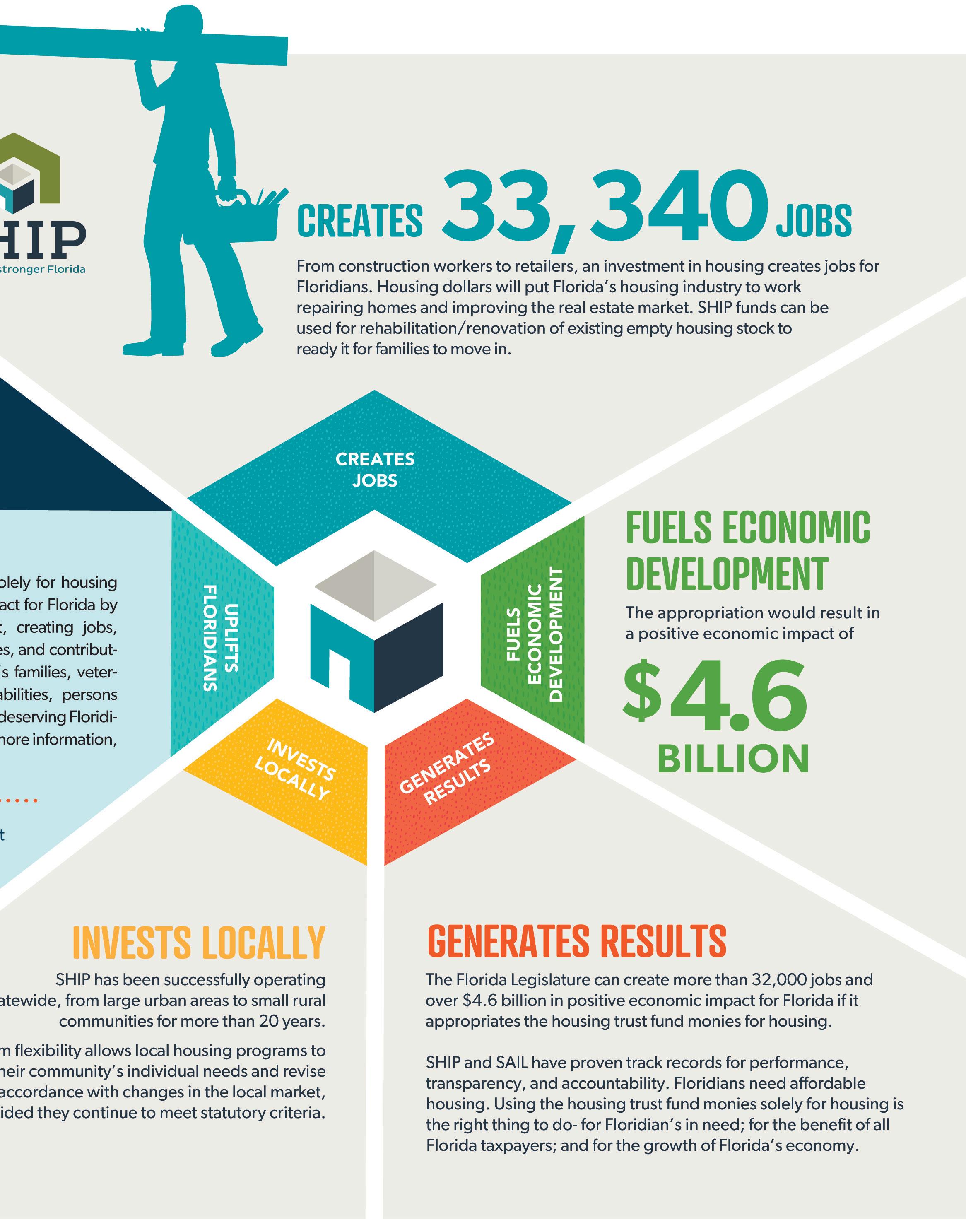
12 minute read
Endnotes
•At least 65% must be spent on homeownership related activities (including homebuying or home repair) •At least 75% must be spent on construction (including new construction and rehabilitation) •At least 30% must be used to assist very low-income households
•At least 60% must be used to assist low-income households
Advertisement
•No more than 10% may be used on administration Up to 25% of a community’s SHIP allocations can be used for rental housing activities, allowing important access to permanent housing for households unable to purchase homes. Several SHIP communities utilize their rental funds for eviction prevention and move-in cost assistance (e.g. security and utility deposits). Additionally, in the 201617 legislative session, the SHIP statute was amended to allow SHIP communities to add a rental assistance strategy providing up to 12 months of rental assistance to very lowincome households experiencing homelessness or who have a member with special needs. The State Housing Trust Fund supports the State Apartment Incentive Loan (SAIL) program and is administered by the Florida Housing Finance Corporation. SAIL provides gap financing to developers to leverage other funding sources, such as the Low-Income Tax Credit and Mortgage Revenue Bonds. It also provides competitive funding for the construction or rehabilitation of affordable rental housing units. Impact of Sadowski Trust Funds
The projected revenue for the Sadowski State and Local Housing Trust Funds in Fiscal Year 2021-2022, is $423,300,000., with $126.7 million being used to fund SAIL and $296.6 million used to fund SHIP.
The projected economic impact of the Sadowski trust funds is shown in the table below. Every dollar spent from the Sadowski fund will leverage $4 to $6 from other private and public sources; when the total impacts are considered, the total economic impact equates to about $4.9 billion. Additionally, the creation or renovation of affordable housing units will create more than 33,000 jobs and provide 19,000 homes. (The Sadowski Coalition, 2020). A seminal report was commissioned by the Florida Association of Local Housing Finance Authorities by REC (put in that info) which measured for the first time what the return on investment is from revenue generated by sales and other taxes. The REC Report found that if $423 million is used for Sadowski programs, it will generate $167 million in revenue to the state and local governments. Since program inception in FY 1992-1993, over $2.6 billion SHIP/HHRP funding has been appropriated and allocated, leveraging more than $8.8 billion and financing over 207,000 units. Likewise, over $1.2 billion has been allocated to SAIL and Homeownership (HAP) since inception, resulting in 75,749 and 30,294 total units financed, respectively. Between these programs, over 310,000 units were financed from inception to FY
2018-2019. However, due to the $2.2 billion swept from the Sadowski trust funds, an estimated over 166,000 units were not produced. The failure to appropriate Sadowski funding for housing is a longstanding statewide issue that has real life consequences for Florida households and the loss of this housing exacerbates Florida’s housing crisis.
Conclusion
Affordable Housing is Essential for Floridians:
Having a healthy, affordable place to call home is the foundation of our lives and the basis of strong local economies. Affordable housing allows low-income and moderate-income working families to live near their places of employment and enables elderly and disabled family members on fixed incomes to be integrated with their communities.
• Affordable housing construction and rehabilitation stimulate local economies by creating jobs and generating business for contractors and suppliers. • Affordable housing is essential for both public sector and private sector businesses to recruit and retain a workforce.
• Affordable housing improves a family’s physical and mental health and helps children excel in school. • For the elderly and people with disabilities, affordable community-based housing is one-third of the cost of institutional care.
• For people who are chronically homeless, affordable housing breaks the costly cycle through hospitals, jails, and other taxpayer-funded crisis systems.
We Don’t Have Enough Affordable Housing in Florida:
• Close to 2 million low-income Florida households pay more than 30% of their incomes for housing, the maximum amount considered affordable by experts. • Of these nearly 2 million low-income “costburdened” households, over 650,324 households are headed by seniors, and 611,553 households have a member with disabilities.
• Over 1,132,232 very low-income households in
Florida are severely cost-burdened, meaning that they pay more than 50% of their incomes for housing. • Though Florida has seen a significant decrease in homelessness over the past ten years, there are still over 27,000 individuals and families experiencing homelessness on any given night throughout the state. In the 2017-2018 school year, 96,028 K-12 students experienced homelessness or housing instability. Studies show that children experiencing homelessness have poorer health, mental health, and

educational outcomes than their peers. • “Drive till you qualify” is not a solution to high housing costs since transportation costs largely consume the housing cost savings. In rural areas across Florida, households pay a larger share of household income towards housing and transportation than more urban residents, even with dramatically lower housing costs.
There is a Large and Growing Gap Between Income and Housing Costs:
• For a family of four to meet its basic needs, the parents must earn a combined wage of $34.76 per hour, or about $17.38 per parent. Unfortunately, many of Florida’s jobs are in occupations with median wages below $17.38 per hour. • Rents are out of reach for low-income workers in many
Florida communities. For example, a restaurant cook cannot afford a moderately priced one-bedroom apartment in the Orlando, West Palm Beach or
Tallahassee areas.
• Florida has only 25 affordable and available rental units for every 100 extremely low-income renters (those with incomes at or below 30% of the area median). • Over 35,000 units are at risk of being permanently lost from the privately-owned affordable housing stock by 2030. • The median renter income in Florida is too low to afford median rents, and the gap between rents and renter incomes is wider now than it was at the height of the housing boom. • Median-priced homes in Florida are out of reach for many workers with medium and high-skilled jobs. • Florida has a shortage of moderately priced homes available for low-income homebuyers, partly due to competition from investors and second-home buyers.
In 2018, there were about nine low-income potential homebuyers for every home sold to an owneroccupant at or below the median sale price.
The Good News
Although the affordable housing need in Florida is daunting, our state has a nationally acclaimed program based on a dedicated revenue source with a proven track record for performance, transparency, and accountability: The State and Local Housing Trust Funds created by the William E. Sadowski Affordable Housing Act. The largest State Housing Trust Fund program in Florida is the State Apartment Incentive Loan (SAIL) program, while the Local Housing Trust Fund supports State Housing Initiatives Partnership (SHIP) programs in every county and all of Florida’s larger cities.
The Sadowski programs are a powerful engine of economic development in Florida. If the State Legislature appropriates all State and Local Housing Trust Fund monies for housing in 2021, the resulting affordable housing development will generate:
• Over $4.9 billion in positive economic benefit
• Close to 33,000 jobs
• A 40% return on investment in revenue generated
• 19,000 homes
In addition to boosting the state’s economy, SHIP and SAIL have helped hundreds of thousands of low- and moderateincome families move into affordable homes or renovate their current homes since 1992. SHIP and SAIL are Florida’s most important homegrown tools for providing housing for our most vulnerable populations, including:
• Elderly households
• People with developmental disabilities
• Veterans and families experiencing homelessness
Affordable housing saves taxpayer dollars and improves the quality of life for these vulnerable populations.
With strong public-private partnerships leveraged by consistent state funding, we can help thousands of families move into decent, safe, affordable housing every year, boosting our state and local economies in the process. Fully appropriating Sadowski Housing Trust Fund monies for housing is one of the best policy decisions we can make at this critical moment when Florida’s home prices and overall economy reach full recovery from the Great Recession.

SADOWSKI HOUSING COALITION MEMBERS
BUSINESS/ INDUSTRY GROUPS
• Associated Industries of Florida • Coalition of Affordable Housing
Providers • Florida Apartment Association • Florida Bankers Association • Florida Chamber of Commerce
• American Planning Assoc., Fla. Ch. • Florida Association of Counties • Florida Association of Local Housing
Finance Authorities • Florida League of Cities • Florida Redevelopment Association • Florida Regional Councils Association
BUSINESS/ INDUSTRY GROUPS
• Florida Green Building Coalition • Florida Home Builders Association • Florida Manufactured Housing
Association • Florida Realtors • Florida Retail Federation • Florida Conference of Catholic
Bishops • Florida Impact • Habitat for Humanity of Florida • Volunteers of America of Florida
ADVOCATES FOR THE ELDERLY/ VETS/ HOMELESS/ SPECIAL NEEDS
• AARP of Florida • Florida Association of Housing and
Redevelopment Officials • Florida Coalition for the Homeless • Florida Housing Coalition • Florida Legal Services
ADVOCATES FOR THE ELDERLY/ VETS/ HOMELESS/ SPECIAL NEEDS
• Florida Supportive Housing Coalition • Florida Veterans Foundation • LeadingAge Florida • The Arc of Florida • United Way of Florida GOVERNMENT/ PLANNING ORGANIZATIONS
FAITH BASED ORGANIZATIONS

Sadowski Affiliates are comprised of the local organizational members of the Sadowski Coalition members, such as local Realtors, United Way offices, and Habitat Affiliates, as well as hundreds of individuals throughout Florida who are not affiliated with any organization. They are Many Voices having One Message: Use all of the State and Local Housing Trust Funds for Housing.


Endnotes
1 Wardrip, K., Williams, L., and Hague, S. 2011. The Role of Affordable Housing in Creating Jobs and Stimulating Local Economic Development: A
Review of the Literature. Washington, DC: Center for Housing Policy. Via The National Resource Network. 2 Golden, T. 2016. Insufficient Affordable Housing Limits Florida’s Economic Potential. Lake Mary, FL: Florida Policy Institute. http://www.fpi. institute/insufficient-affordable-housing-limits-floridas-economic-potential/.
3 Wardrip et al. 2011.
4 Golden 2016.
6 Houser, A., Fox-Grage, W., and Ujvari, K. 2018. Across the States: Profiles of Long-Term Services and Supports. Washington, D.C.: AARP. https://www.aarp.org/content/dam/aarp/ppi/2018/08/florida-LTSS-profile.pdf.
7 Shinn, G.A. 2014. The Cost of Long-Term Homelessness in Central Florida. Orlando, FL: Central Florida Commission on Homelessness. http://shnny.org/uploads/Florida-Homelessness-Report-2014.pdf.
8 Maqbool, N., Vivieros, J., and Ault, M. 2015. The Impacts of Affordable Housing on Health: A Research Summary. Washington, DC: Center for
Housing Policy. http://media.wix.com/ugd/19cfbe_d31c27e13a99486e984e2b6fa3002067.pdf. 9 Center for American Progress (2020), “The Pandemic Has Exacerbated Housing Instability for Renters of Color”. https://www. americanprogress.org/issues/poverty/reports/2020/10/30/492606/pandemic-exacerbated-housing-instability-renters-color/
10 Ibid.
11 Newman, S.J. 2008. Does Housing Matter for Poor Families? A Critical Summary of Research and Issues Still to be Resolved. Journal of Policy
Analysis and Management 27 (4): 895-925.
12 Maqbool et al. 2015.
13 Newman 2008.
14 National Health Care for the Homeless Council. 2011. Homelessness & Health: What’s the Connection? http://www.nhchc.org/wp-content/ uploads/2011/09/Hln_health_factsheet_Jan10.pdf.
15 Brennan, M., Reed, P., and Sturtevant, L.A. 2014. The Impacts of Affordable Housing in Education: A Research Summary. Washington, DC:
Center for Housing Policy. http://media.wix.com/ugd/19cfbe_c1919d4c2bdf40929852291a57e5246f.pdf.
16 Children’s HealthWatch and Medical-Legal Partnership Boston. 2016. Housing as a Health Care Investment: Affordable Housing Supports
Children’s Health. http://childrenshealthwatch.org/wp-content/uploads/Housing-as-a-Health-Care-Investment.pdf.
17 Newman 2008.
18 Newman, S.J. and Harkness, J. 1999. The Long-Term Effects of Housing Assistance on Self-Sufficiency: Final Report. Washington, DC: U.S.
Department of Housing and Urban Development [HUD]. http://www.huduser.org/portal//Publications/pdf/longterm.pdf. 19 Shimberg Center for Housing Studies. 2019a. [Custom tabulations of 1-year Public Use Microdata Sample (PUMS) data for 2005 through 2016 from the U.S. Census Bureau] Gainesville, FL: University of Florida. Available on request.
20 Ibid.
21 Caregiver Action Network. 2016. Caregiver Statistics. http://caregiveraction.org/resources/caregiver-statistics. 22 Joint Center for Housing Studies of Harvard University [JCHS]. 2018. The State of the Nation’s Housing 2018. http://www.jchs.harvard.edu/ research/state_nations_housing. 23 JCHS. 2017. America’s Rental Housing: Evolving Markets and Needs. http://www.jchs.harvard.edu/americas-rental-housing 24 Data on student homelessness was obtained from the following sources provided by the National Center for Homeless Education (http:// center.serve.org/nche/) : 25 United Way of Florida. 2020. ALICE (Assed Limited, Income Constrained, Employed): Study of Financial Hardship. https://www.uwof.org/ sites/uwof.org/files/2020ALICEHightlightsReport_FL_FINAL-4.15.20.pdf 26 US Bureau of Labor Statistics. 2018. [2018 statewide Occupational Employment Statistics data] https://www.bls.gov/oes/current/oes_fl.htm 27 Center for Neighborhood Technology [CNT]. 2020. [Housing + Transportation Index data]. http://htaindex.cnt.org/map/
28 Ibid.
29 Shimberg Center 2020a, Household Data 30 Bandell, B. 2015, June 5. “Companies need affordable workers, but workers need affordable rent.” South Florida Business Journal [online article]. http://www.bizjournals.com/southflorida/print-edition/2015/06/05/the-workforce-needs-affordable-housing.html.
31 National Low Income Housing Coalition [NLIHC]. 2018a. [Out of Reach data for Florida.] http://nlihc.org/oor. 32 NLIHC. 2016b. The Affordable Housing Gap Analysis 2016. http://nlihc.org/sites/default/files/Gap-Report_print.pdf. 33 Shimberg Center for Housing Studies. 2019. [Lost Properties Inventory data for Florida] http://flhousingdata.shimberg.ufl.edu/assistedhousing-inventory/results?nid=1. 34 Shimberg Center. 2016c. 2016 Rental Market Study. http://www.shimberg.ufl.edu/publications/Full_RMS_final_rev09_16.pdf.
35 JCHS 2015.
36 Shimberg Center 2020a. 37 Zillow. 2016, February 4. “Buying beats renting in less than two years, but millennials still have reason to rent.” http://zillow.mediaroom. com/2016-02-04-Buying-Beats-Renting-in-Less-Than-Two-Years-But-Millennials-Still-Have-Reason-to-Rent. 38 Huddleston, C. 2016, July 18. “The cost of renting vs. owning a home in every state.” GOBankingRates. https://www.gobankingrates.com/ mortgage-rates/cost-renting-vs-owning-home-state/. 39 Borns, P. 2016, July 28. “Should you rent or buy?” Fort Myers News-Press [online article]. http://www.news-press.com/story/ news/2016/07/25/should-you-rent-buy/87378596/. 40 National Association of Home Builders [NAHB]. 2018. [NAHB/Wells Fargo Housing Opportunity Index (HOI) data for 2018 Q3.] http://www. nahb.org/en/research/housing-economics/housing-indexes/housing-opportunity-index.aspx.
41 Shimberg Center 2020a. 42 Freddie Mac. 2020. Freddie Mac House Price Index. http://www.freddiemac.com/research/indices/house-price-index. page#:~:text=The%20FMHPI%20provides%20a%20measure,is%20published%20in%20late%20April.
43 Public Opinion Polling on Housing Instability During the COVID-19 Pandemic, Opportunity Starts at Home, June 2020 44 Florida Housing Coalition, Cost Burden by Race [See Figure]
45 Promoting Neighborhood Diversity: Benefits, Barriers, and Strategies, Urban Institute, 2009. 46 Mitchell, Bruce & Franco, Juan & Richardson, Jason. (2018). HOLC “redlining” maps: The persistent structure of segregation and economic inequality. 47 Florida Housing Coalition, Tenure by Race [See Figure]
48 Florida Realtors, “Single Family Home Market Sales Activity - December 2020”
49 Shimberg Center 2020b, Eviction Data
50 An Economic Analysis of the Florida Housing Program, 2021, The Florida Association of Local Housing Finance Authorities. Retrieved from: https://www.sadowskicoalition.org/wp-content/uploads/2021/02/Economic-Analysis-2021.pdf
Affordable Housing is an Integral Part of Community Revitalization and Economic Development
The Florida Housing Coalition, Inc., is a nonprofit, statewide membership organization which brings together housing advocates and resources so that all Floridians have a quality affordable home and suitable living environment. FOR MORE INFORMATION, CONTACT: The Florida Housing Coalition 1367 E. Lafayette St., Ste. C Tallahassee, FL, 32301 (850) 878-4219 info@flhousing.org FLHousing.org

The Florida Housing Coalition appreciates PNC for funding the Home Matters report.









